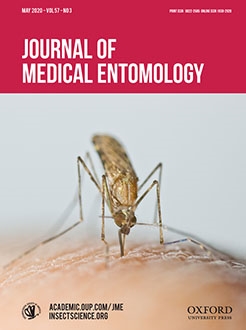The scaling-up of malaria control interventions in northernTanzania has resulted in a decline in malaria prevalence and vector species composition. Despite this achievement, residual malaria transmission remains a concern in the area. The main aim of this study was to investigate malaria vector species composition, parasite infectivity rates, and the presence of insecticide knockdown resistance (kdr) mutations in three sites that have experienced a significant decline in malaria in northernTanzania. Adult mosquitoes were sampled using light traps in houses and hand-aspirators in cowsheds, whereas the standard dipping method was used for sampling mosquito larvae. Adult mosquitoes identified as Anopheles gambiae s.l. and An. funestus s.l. and larval stages III and IV of An. gambiae s.l. were stored in absolute ethanol for further laboratory molecular identification. The identified species in the An. gambiae complex were An. gambiae s.s., An. merus, An. quadriannulatus, and An. arabiensis, whereas the An. funestus group comprised An. funestus s.s., An. rivulorum, and An. leesoni. For An. gambiae s.s. analyzed from Zeneth, 47.6% were kdr-East homozygous susceptible, 35.7% kdr-East heterozygous resistant, 9.6% kdr-East homozygous resistant, and 7.1% undefined, whereas specimens from Kwakibuyu were 45.5% kdr-East homozygous susceptible, 32.7% kdr-East heterozygous resistant, 16.3% kdr-East homozygous resistant, and 5.5% undefined. There were no kdr-West alleles identified from any specimen. The overall malaria parasite infectivity rate was 0.75%. No infections were found in Moshi. The findings indicate that populations of the major malaria vector mosquitoes are still present in the study area, with An. funestus taking a lead in malaria transmission.
How to translate text using browser tools
10 January 2020
Anopheline Mosquito Species Composition, Kdr Mutation Frequency, and Parasite Infectivity Status in Northern Tanzania
Eliningaya J. Kweka,
Humphrey D. Mazigo,
Lucile J. Lyaruu,
Emmanuel A. Mausa,
Nelius Venter,
Aneth M. Mahande,
Maureen Coetzee
ACCESS THE FULL ARTICLE
It is not available for individual sale.
This article is only available to subscribers.
It is not available for individual sale.
It is not available for individual sale.

Journal of Medical Entomology
Vol. 57 • No. 3
May 2020
Vol. 57 • No. 3
May 2020
habitat
malaria
mutation
trapping
vector




